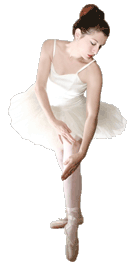At MusicalExpert, we're committed to delivering accurate, trustworthy information. Our expert-authored content is rigorously fact-checked and sourced from credible authorities. Discover how we uphold the highest standards in providing you with reliable knowledge.
What is a Cornet?
The cornet, like the better-known trumpet, is a member of the brass family of instruments. The brass family is often divided into horns, trumpets, trombones, and tubas. The cornet is a member of the trumpet group, which includes bass trumpets in Eb and Bb; trumpets in Bb, C, D, and Eb; the piccolo trumpet in A and Bb; the Bb and Eb cornets; and the Bb flugelhorn.
Though orchestra music has been written calling for cornet, the trumpet is used more often in orchestras today, although experts feel that it is not an exact substitute. Though the trumpet and cornet are both treble valved instruments and the Bb versions have an identical range, their sound is different. While the trumpet is described as brilliant, the cornet sound is considered more horn-like and mellow. Nevertheless, they both use the overtone series in producing pitches.

The cornet continues to be used in wind ensembles, theater orchestras, and concert bands. It is also used in Dixieland jazz, British brass bands, Salvation Army bands, and military and marching bands. The soprano cornet is pitched a fourth above, in Eb and is used for countermelodies. It is a standard part of a British brass band, along with Bb cornets.
Famous cornetists include Herbert Lincoln Clarke (1867–1945), who performed in the bands of Patrick Sarsfield Gilmore (also a cornetist), Victor Herbert, and John Philip Sousa. Louis Armstrong, famous as a trumpeter, played the cornet until 1925. Leon Bismark “Bix” Beiderbecke (1903–1931) and Jimmy McPartland (1907–1991) were two other well-known cornetists.
Famous orchestral works that include cornet include Georges Bizet’s Carmen: Suite No. 2, Peter Tchaikovsky’s Capriccio Italien, Igor Stravinsky’s Petrushka, Hector Berlioz’ Symphonie Fantastique, and Sergei Prokofiev’s Lieutenant Kijé. Cornets were typically used by Sir Arthur Sullivan in the operettas he co-wrote with Sir William Schenk Gilbert.
Jean Baptiste Arban, a French cornetist who wrote the first cornet instruction book, also composed a number of solos for the instrument. Herbert Lincoln Clarke composed for the cornet as well as played it. The popular repertoire included arrangements of folk songs, waltzes, polkas, and other popular song tunes.
AS FEATURED ON:
AS FEATURED ON:










Discuss this Article
Post your comments